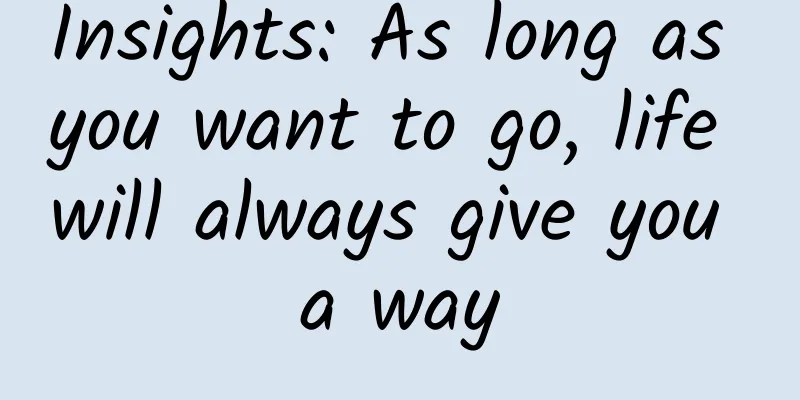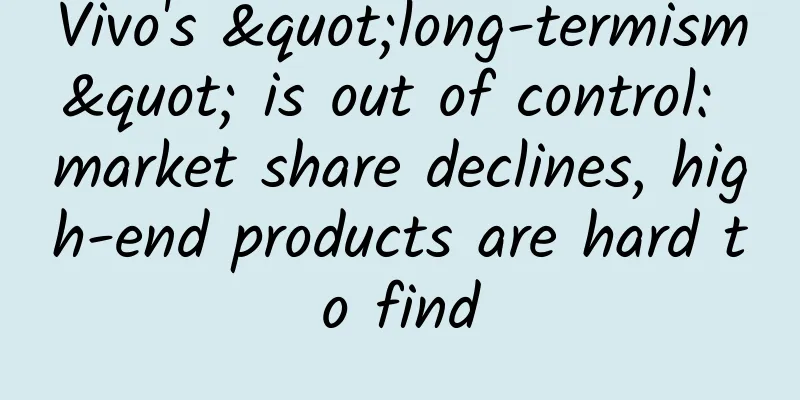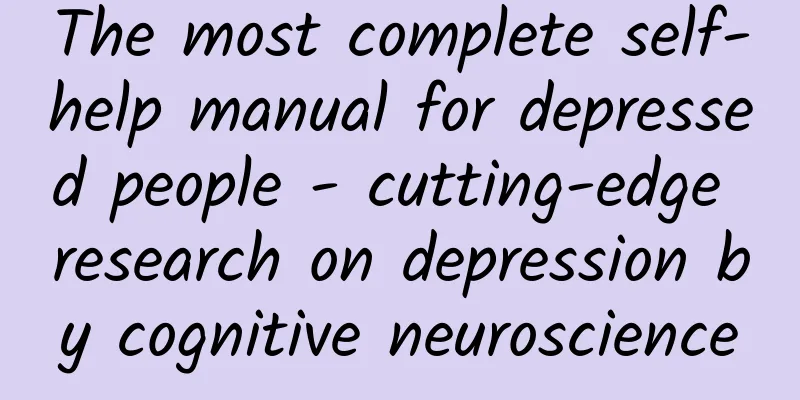Why should users buy your product? 4 ways to steal competitors’ products!

|
Let me ask you two questions first: If there is a girl with long flowing hair around you, and you want to persuade her to perm her straight hair into curly hair, is it difficult?
If your mother loves playing mahjong, would it be difficult for you to ask her to give it up and dance square dance? I believe that for most of my friends, the answer is "difficult" or "very difficult". Why? Because we all know that a person's living habits and hobbies are very difficult to change. It is difficult to make a fat person fall in love with fitness, and it is also difficult to make someone who plays games until 2 o'clock every day read more books at night. The same goes for marketing. It is difficult to get someone to accept a new product from scratch, especially when he has a deep-rooted choice. As we all know, the essence of marketing is to meet certain needs of consumers . If this need is a blank area that you have just discovered and no brand has occupied it, then congratulations, you can enjoy the same treatment as Wanglaoji and Melatonin - just shout out the needs and solutions: "If you don't want to get angry, drink Wanglaoji" (At that time, no product clearly stated that it could prevent getting angry.) “Give Melatonin as a gift” (At that time, no product explicitly promoted the idea of gift giving) "For symptoms of chronic pharyngitis, use Manyan Shuning brand!" (Similarly, it targets the cognitive gap in the treatment of pharyngitis) But in today's era of saturated competition, it is difficult to find an unoccupied cognitive high ground - the needs that should be met have already been met. This means that you have to snatch customers back from mature products and brands and compare to see who can better meet a certain need of consumers. So many people feel that marketing is becoming more and more difficult, because you have to change consumers' "default choice" for a certain demand and make them choose your product again. For example, if you sell instant noodles, why don’t consumers buy Master Kong or Uni-President noodles but yours? For example, if you sell toothpaste, why don’t consumers buy China or Colgate but yours? For example, if you open a coffee shop, why would consumers go to yours instead of Starbucks? (Of course, some small cities don’t have Starbucks, so there is a chance for small-brand coffee shops) Summary in one sentence: Why should users buy your product? So what should we do? Since the demand has already been occupied by earlier and more mature brands, does that mean that business cannot be done? Of course not! With the development of the times, we have observed that more and more new brands are emerging and defeating the old brands that have been dominating the market for decades. So, what is the fundamental force that determines this alternation between the old and the new?
Where is the way out for new products and new brands? The president does not dare to say that he can give you a set of standard operating plans, but in essence, new brands defeat old brands and new products defeat old products, basically meeting the following two conditions: 1. Targeting user “dissatisfaction” and focusing on new changes in user needs 2. Target the new forces among the consumer population and establish yourself as the choice of the new generation Let me explain them one by one below. 1. Targeting user “dissatisfaction” Back to the original question: How to make a girl with long flowing hair change her hair into big curly waves? In fact, you basically cannot succeed by persuading or advising her (unless she is your partner, then there is a chance, but of course you may get beaten up ). In most cases, you can only observe whether she will doubt her choice one day and no longer like long hair, and then tell her at the first time: You are right to think so, you need a sexy and seductive curly hair! Yes. We should not try to change consumers' choices, but only cater to changes in their own consumption needs. There is no solution in the world that works forever. Similarly, as a solution to a need, no product will ever be outdated, it’s just a matter of how long it lasts. Try to think about it, in your industry, are consumers 100% satisfied with their choices? There is an electric kettle on the president's desk. Take this as an example: In the electric kettle industry, do consumers have 100% satisfactory choices? When the electric kettle first came out, it could boil water without the need for fire, just electricity. This was a huge innovation and advancement, and of course everyone was happy with it. But later, some people became concerned about the safety of electric kettles, so new products had leakage protection; Later, someone suggested that the water in an electric kettle would cool down after a while, so an electric kettle with automatic heat preservation function was invented. Later, some people thought that electric kettles were too ugly, so there were electric kettles with high appearance value... Yes, consumers will never be satisfied . Under the premise of meeting the big demand of "boiling water with electricity", new small demands continue to emerge. Every outbreak of small demands is a good opportunity for you to exert your efforts. What you need to do is to understand consumers’ dissatisfaction with existing products, and then make the final move by amplifying this dissatisfaction and proposing new solutions (your products). To summarize with a formula: Consumers’ “dissatisfaction” with existing choices + the solutions you provide = your product appeal For example, if you sell oranges online, you can try to find the "dissatisfaction" that consumers have encountered when purchasing oranges online, and then use your products to solve this problem. Do consumers often encounter bad oranges when buying oranges online? Then try to reduce the bad fruit rate of your oranges, and then write a copy: "One bad orange can ruin your good mood for the day. xx orange, the bad rate is less than 0.2%, and the payout ratio is 10 for every bad one." Are consumers worried that oranges are ripened artificially? Then make sure your oranges are fine, and then write a copy: "You can't tell if an orange has been ripened artificially, but you'll know it once you eat it. It's xx orange, 100% free of ripening agents, and they offer free samples." Remember, user dissatisfaction with existing products is your huge business opportunity. So, how to find consumers’ “dissatisfaction”? In other words, at which stages do users’ “dissatisfaction” with existing products often occur? The president has summarized 4 directions for your reference 1. Process experience 2. Usage threshold 3. Customization 4. Psychological satisfaction 1. Process experience In previous consumption scenarios, products mainly met people’s “ material needs” : As long as it works and is easy to use, that's enough. For example, if a scallion pancake maker sells scallion pancakes on the street, they only need to make them big and with lots of sesame seeds. For example, many restaurants focus on large plates and affordability, and taste is secondary; (The president once ordered a 30-yuan bowl of beef brisket stewed with tomatoes in Shandong, his hometown, and the boss served him a whole pot of it.) Another example is the Nokia phones of the past. Many people valued the quality and thought that they would not break even if they fell from the third floor... But now more and more consumers no longer regard material satisfaction as the only determining factor, but are more pursuing "process experience": Not only the product should be good, but the experience of purchasing and using the product should also be good. For example, Xishaoye Roujiamo sells traditional snacks such as Roujiamo and Hu La Tang in a sophisticated store and provides a dining environment comparable to McDonald's. As the user's dining experience improves, the average customer spending naturally goes up. Roujiamo that costs a few yuan can be sold for more than 10 or 20 yuan each. For example, the nuts of Three Squirrels, in addition to the excellent quality of the product itself, whether it is the brand image of "Three Little Squirrels" or the cute customer service girls, they are all subtly improving your purchasing experience; Even something as small as a takeaway can be used as a process experience. Previously, the president ordered a takeaway and found a small note inside with a handwritten sentence: "The weather is cold, but luckily the food is hot. I drew Peppa Pig for you. I wish you a pleasant meal! (I really drew Peppa Pig)" In fact, no matter what industry you are in, as long as you ensure product quality, you can work hard to improve the user's purchasing or usage experience. For example, when taking a taxi, the seats in taxis are often dirty and the smell in the car is not good, which often makes users "dissatisfied" - Didi invites passengers to rate the environment of the express car and ask whether there is cigarette smell , so as to improve the user's riding experience; These are the pain points discovered during the user's purchase and use process. You can think carefully about: In your industry, what are the bad experiences that users have when purchasing and using existing products?
Can your product improve the experience in this area?
Then just use the copy to clearly express the solution. 2. Usage threshold In the past, we attached great importance to the performance and effects of products, but often ignored the usage threshold of products. What is the usage threshold? It is the action cost of users learning and using the product. For example, Dong'e Ejiao was once just a medicinal ingredient in traditional Chinese medicine. After purchasing it, it needed to undergo secondary processing and boiling, and the threshold for users to use it was very high. Later, Dong-E Ejiao launched products such as oral liquid, donkey-hide gelatin powder, and donkey-hide gelatin capsules. After consumers buy them home, they do not need to process them further and can take them directly , which greatly lowers the threshold for use (of course, because the product is diluted, the profit margin is also greatly improved). Similarly, in the competition between mobile phone lenses and SLR cameras, with the popularization of smartphones, fewer and fewer people use SLR cameras to take pictures - although the photos taken are of high quality, it is difficult to take good photos, unlike mobile phones, which not only have automatic focus, but also have built-in beauty. Are the performance and effects of the product important? Of course it is important. But the prerequisite is that users must know how to use it and be able to use it well. If the product is so complicated that users still cannot use it after learning it for a long time, then you need to think carefully about how to lower the threshold for users to use it. For example, many books are too complicated for most people to understand, and users are often "dissatisfied" - so there is "Listen to a Book Every Day", which breaks down the knowledge in the book and tells it to users; (Luo Pang: Be the reader around you) For example, many young people don’t know how to cook. They get a headache when they encounter ingredients and are often “dissatisfied”. Therefore, some brands of soymilk machines and rice cookers will provide recipes and detailed operation steps , including ingredients, water amount, waiting time for each step, etc., to achieve fool-proof teaching. For example, photo editing is too troublesome and users are often "dissatisfied" - so there are Meitu XiuXiu and many apps and mini-programs that can change faces with one click . After uploading the picture, you can complete the entire operation by clicking a few buttons. In your industry, any link that users need to learn repeatedly to master is a business opportunity that you can explore. If you sell fruits, you can publish a manual or a Douyin video to teach users how to pick out fresh fruits (many young people don’t know how to do this) and how to make a beautiful fruit plate. Or you can be more direct and help them pick and arrange the fruits and send them to the customer. If you sell Ganoderma lucidum powder, you can give away a small spoon and a small cup with a scale along with the product, so that users know how much powder to add and how much water to pour to mix each time. In short, it can be summed up in one sentence: "If you don't know how to use it, I'll teach you." You can think carefully: In your industry, have users encountered any issues with using existing products?
How to help him solve this problem?
Then describe your solution in writing. 3. Customization In the industrial age, business was about producing "standardized" products quickly and on a large scale. Because supplies were scarce in the past, it was good to have some, so it did not cause dissatisfaction among users. But today, many products are often not "shortage" but "surplus". If you search for any category, you will find many highly homogeneous products. At the same time, more and more people are dissatisfied with standardized products : For example, children's bicycles. In the past, it was good enough for children to have a bicycle to ride. But today, can children aged 3 to 5 and children aged 5 to 8 ride the same bicycles? (So children's bicycles have different models and styles) For example, mobile phones. In the past, having a smartphone was a big deal, but today, can people who like taking photos and people who like playing games use the same mobile phone? (So there are camera phones, gaming phones, and 8848 business phones) Even when it comes to rice, some people have raised the question: Can the rice eaten by ordinary people be the same as the rice eaten by pregnant women, babies, and the elderly? (So there is rice for pregnancy, rice for baby porridge, and rice for nutrition for the elderly) Yes, different people have different requirements, why should the products be the same? However, many categories are still using the same product to solve all problems, which naturally brings "dissatisfaction" to users. For example, if you sell mops, how can the mop that the elderly like to use and the mop that otakus like to use be the same? (You can search Douyin for lazy mop) For example, if you sell hair dryers, how can the hair dryers used by women and men be the same? Even if you sell trash cans, you can distinguish between office trash cans, bathroom trash cans, and nerd trash cans ... You can think carefully: Are the products in your industry standardized? Which groups of people are very dissatisfied with this?
How do you help them launch customized products in a targeted manner?
Then use copywriting to push this information to the target audience. 4. Psychological satisfaction In the past, the purpose of buying products was almost always to solve the problem of "functional satisfaction" : For example, when buying fruit, it is enough if it is delicious, fresh and has no residue, and nothing else matters; For example, when buying a down jacket, the key is its warmth retention effect; it just needs to look decent. But today, in addition to functional satisfaction, many people increasingly value the "psychological satisfaction" brought by products: For example, the "Ecuadorian Pink Diamond" ice cream, which costs 66 yuan a stick, is good enough and expensive enough to give people a sense of psychological satisfaction of "treating themselves" ; For example, many people buy various courses and pay for knowledge every day. They may not really learn much, but they can get rid of the "anxiety" caused by life and work pressure (implying that they are working hard to improve the current situation); Another example is the various internet-famous milk tea shops, where you often have to queue for half a day to buy a cup. The milk tea may not be really that delicious, but it can make people feel that they are "at the forefront of fashion." When doing business today, simply providing "functional satisfaction" often means that you have to fight hand-to-hand with others in a red ocean. And if you add "psychological satisfaction" to the product, you can give the product a certain emotional magic and temporarily get rid of the current situation of homogeneity. For example, when selling beverages, besides competing on taste, you can also compete on copywriting. The copywriting on the bottles of Jiang Xiaobai, Weiquan, and Coca-Cola indicates that what users drink is not a beverage, but "chicken soup"; For example, when opening a coffee shop, in addition to coffee, you can also engage in pets - various cat cafes and cute pet cafes, "healing minor emotions"; For example, many Internet-famous restaurants actually compete on the “appearance” of the dishes and the dining environment - appearance is justice, and only with class can they satisfy users’ psychological needs of “posting on WeChat Moments”. You can think carefully about: In your industry, is there room for "psychological satisfaction" in addition to "functional satisfaction"?
What kind of psychological satisfaction should your product provide?
Then organize the text and write some interesting copy to help users achieve psychological satisfaction. 2. Targeting the new population We all have the experience that the older we are, the harder it is for us to accept new things . For example, it is difficult to get someone who has used Liushen Floral Water for 30 years to try a new brand; For example, people who are used to eating pancakes with fried dough sticks may find "pancake + meat floss" inexplicable; For example, my parents can never learn many new features on WeChat, and they don’t have the energy to learn them… As a new product or new brand, it is difficult to change the deeply rooted choices of the older generation of consumers. Therefore, in order to win in the PK between the new and the old, in addition to targeting users' "dissatisfaction" with existing choices, you should also pay attention to targeting the "newcomers" - they have stronger learning and acceptance abilities, and they are perfect as seed users. This is why TFBOYS is so popular, because they are the idols of the new generation, and countless brands are targeting their influence: (It is rumored that TFBOYS was "divided" by Huawei, OPPO and Xiaomi) This is why PepsiCo always pays attention to the demands of young people and launches one Campaign after another targeting them. In the competition between new and old brands, if the competitive strategy against "dissatisfaction with existing products" is a "physical attack" at the product level, then the competitive strategy targeting the new generation of idols is a "spiritual attack" at the brand level: Users choose you not because your product is so different, but simply because your brand represents the consumption attitude of a new generation, or because they really like your brand spokesperson. Under the double blow of physical and mental stress, the decline of old brands and the rise of new brands are natural things. Conclusion Many people think marketing is difficult because their thinking is still stuck in the past era: Consumers have a demand, and I want to play the role of "savior" to help them meet this demand. But the more realistic competitive environment is: Consumers have a demand, and solutions have long been found, and other brands have already firmly occupied the demand. What you need to do is not only to meet the demand, you also have to consider how to take over the old brand first. Today I will share with you two basic thinking logics
1. Targeting user “dissatisfaction” and focusing on new changes in user needs 2. Target the new forces among the consumer population and establish yourself as the choice of the new generation Source: Marketing Commune |
>>: How to use short videos to direct traffic to the live broadcast room!
Recommend
Operation and Promotion: How to increase the operation from 20,000 to 100,000+ in 3 months?
This article will talk to you about what you shou...
How far is it from actual combat to use unmanned equipment to improve logistical material support?
There is no doubt that the status and role of unm...
Mixed infection has occurred! Doctors remind that the popular "three-piece set" for Mycoplasma pneumoniae infection should be used with caution!
Edit: Thanks Autumn and winter are the peak seaso...
WeChat releases version 8.0.5: Freeze friends’ WeChat accounts with one click, no longer worried about losing your phone
WeChat has not been a perfect application since i...
Mobile payment users will increase to 790 million in 2020: Alipay and Meituan Pay build a closed business loop
With the popularization of mobile smart terminals...
Itchy~itchy~itchy~ Summer is related to "prickly heat"
It's not until the rain that spring has gone,...
How did Zhang Xiaolong build the huge business empire of WeChat?
WeChat's business strategy has always been co...
Google's official MVP sample code reading notes
Unraveling the project structure According to int...
How many of the internet celebrity brands that have been all over the screen are still alive?
Although today, many emerging consumer brands hav...
The battle for smart home is on the rise again. Can Apple win with HomeKit?
According to foreign media reports on June 5, sin...
Why do many people lose interest in Android after getting used to iPhone? Experienced people tell their true feelings
Tian Ji's horse racing? It was just to help w...
What does pua man mean in internet slang?
I believe everyone is familiar with " PUA &q...
Guangdiantong Advertising Creative Optimization Operation Guide
This article will bring you the specific steps fo...
Weibo advertising strategy engineering, style and scenarios
Overview 1. Advertising styles and scenarios The ...









